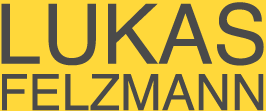Installation with sculptures, projection and photographs at XS Gallery, NevadaFALL and DESIRE, Lukas Felzmann’s Installation of media, sculptural objects, mural photographs, and projections identifies, concentrates, and in fact, relies upon the landscape as a metaphorical place. Landscape becomes a symbol for Lukas Felzmann, a means for searching out and identifying the significance in the relationship between human culture and the landscape. The act of wrapping string around a tree (and photographing it), making piles of rocks (and photographing it), or making a pendulum that remains in the landscape (and photographing it), establishes a theatrical character to the artistic event. In part, the act of creating the art becomes a valuable means of understanding the system and forces that define the relationship between human culture and the landscape.
Fall and Desire is an installation rather than a exhibit. It is not about object of beauty, presented on a gallery wall for the appropriate edification. Installation Implies “object theatre”, a circumstance whereby the artist uses a gallery setting to create a stage; the objects become the actors and the viewers the audience. An installation usually infers that all the objects, whether hung on the wall or placed on the floor are inter-related. They are, quite simply, intended to be integral parts of the greater whole.
The technical explanation behind FALL and DESIRE is relatively direct. The space within the gallery is controlled with the placement of objects, defining the corridor as an intimate environment. The space is defined (and confined) in order to create a context for the audience to experience the objects and photographs. Elements and images of the natural world are interspersed with constructed artifice; a series of rocks is hung by wire over polished metal plates, implying gravity. The diptych of mural photographs mounted on free-standing wall-boards block the space as well as connect with the physical objects in the center of the gallery: the first mural photograph in the diptych represents an abandoned mining cement structure (monolith) which contains an image of another, similar suspended rock. The second mural photograph represents the rock in motion, implying the combination of time and gravity. A huge oversized shirt hangs from the wall at the other end of the gallery (blocking the space) reflecting and absorbing the projection of birds in flight. The other mural photographs, one of a brain, the other of a maze, extend the woven thread of meaning into similarity. The white maze with chalked stones reinterprets the patters on the brain (or vice versa). A light box, ornately and boldly designed, reflects an image of mirrors that become an angels wing upon a shadow. The mystical illusion of flight, travel, and/or journey is conjured within the structure, as well as within the projection of birds upon the shirt. Axe handles (the heavy edged heads removed and replaced with long strands of treated paper and newsprint) are hung upon the wall like weapons ready for use. An axe is by definition a tool, yet this tool becomes a whip, implying punishment, yet the context is controlled by the captions: western civilization, arthistory, science, language, and religion. Each axe (or whip), contains the printed word from those sources. A dictionary is cut into long sections, treated with verathane, and attached to the axe handle. A bible is dissected into another. Charts and maps into another. Upon close inspection, the distinctions represent systems of thought and language, just as the tool becomes a means of solving a problem. Language becomes a tool, and the axes reflect systems of knowledge. The hanging rocks incorporate the tension of the negative space between the rock and the polished metal plate, implying a system- gravity. The tools become a sculptural language; the objects become the words, and the installation becomes the sentence, paragraph and statement.The textural quality (both real and implied) of the objects and photographs maintain a consistent thread implying a relationship among them. They are identified as symbols by how they are contained together within the space. Each object or photograph represents the landscape, and contains reference to the natural and implied systems that define it. Visual and conceptual patterns are repeated. Landscape becomes the stage, conveyed through the illusion of the photographs as well as created within the corridor. The objects become symbols; when tied together, they suggest a metaphor for what Lukas Felzmann calls a “process of thought”.
At first the viewer is challenged to interpret the selection of objects. Meaning is not automatically revealed, especially given the different nature of each object. How, for example, does a huge shirt relate to an axe handle? Or how does a mural photograph of a brain tie into a hanging rock? The key to understanding Fall and Desire involves not the deliberation of differences, but within that process of thinking about the similarities. Woven throughout this installation are clues that identify the artist’s intent. The interpretation of FALL and DESIRE relies on the audience’s ability to engage their imagination within the objects and photographs, transcending those objects’ singular presence. FALL and DESIRE is artist theatre, static, timeless, and challenging. The installation is the performance, and the landscape is the stage.
Peter Goin
